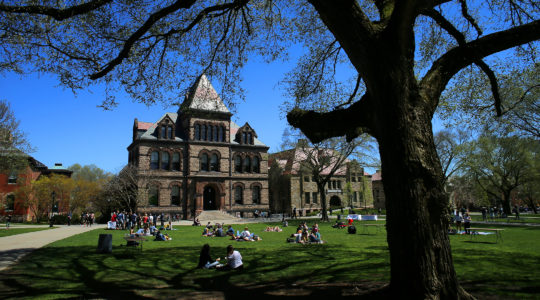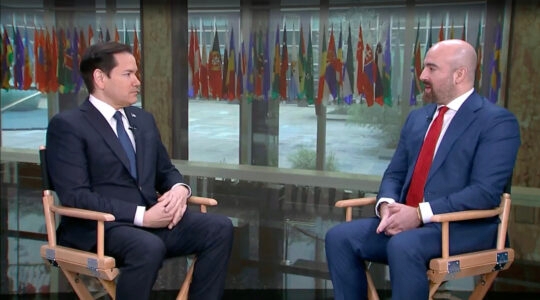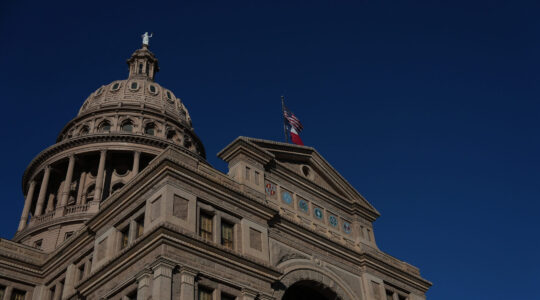WASHINGTON (JTA) — Walking along the dimly lit corridors of the U.S. Holocaust Memorial Museum, the liberators peered at black-and-white photographs and listened to tour guides detail events that many had witnessed as young men in the armed forces.
The relative quiet was a sharp contrast to the flurry of flash bulbs set off moments earlier in the museum lobby as photographers jockeyed to shoot the best picture of U.S. Gen. David Petraeus handing out commemorative medals to the 120 Americans whose divisions freed concentration camps throughout Germany and Austria in the waning months of World War II.
Norman Smith of Albion, Neb., served in the 101st Airborne Division, and later the 82nd, from 1943 to 1946, and guarded the Landsberg Prison in Germany at the end of the war.
“The same place where Hitler wrote ‘Mein Kampf,’ ” he said from his wheelchair.
Smith carried with him pictorial histories of his division and regiment to donate to the museum’s archives.
Stories and pictorials like Smith’s were preserved during the special gathering, the largest of liberators ever at the Holocaust museum, on April 14-15 as part of the Days of Remembrance observed April 11-18. This year’s theme was “Stories of Freedom: What You Do Matters.”
Petraeus, who heads the Central Command covering the Middle East and Central Asia, saluted the liberators in his keynote address in the Capitol Rotunda on April 15, marking the museum’s annual Holocaust commemoration.
“As we remember the victims and survivors today, we also remember and honor the American soldiers who liberated the survivors of the camps 65 years ago,” Petraeus said. “We salute once again the thousands upon thousands of Americans who donned the uniform, freed a continent, and then saved those who survived the living hell of the concentration camps.”
Troops displaying the colors of the units that liberated the camps is traditionally part of the commemoration, so the aged liberators on April 15 rose to recognize their units as they were announced. Some, assisted by their children, gripped their wheelchair arms.
“This event was significant for two reasons because it marked 65 years since the liberation and it may be one of the last times we can have a group of liberators at the museum,” said Neil Newman, who has been giving tours of the museum for five years. “It really gave us a chance to honor the liberators and hear their stories.”
As Newman guided the veterans and their family members through the permanent exhibit, he focused on the role of the liberator. But it was inside a railroad car that Hilbert Margol, a Jewish-American veteran from Atlanta, felt the greatest emotion.
“I was stationed with light artillery supporting the [42nd] infantry company,” Margol said. “We were riding down the road on a fire mission, fired a few rounds, when a jeep driver said that he saw a strange camp on the other side of the road. My twin brother and I went to see the camp.”
What Margol and his twin brother, Howard, saw was the main entrance to Dachau.
“My most vivid memory was of a railroad boxcar on a track by the main entrance,” he recalled. “The sliding doors were open and we could see deceased bodies piled up.”
Margol learned years later that the bodies had been inside the car for 2 1/2 weeks. There was only one survivor.
With a brownie box camera, Howard Margol snapped a picture of the boxcar, which is now part of the museum’s archives.
Emerging from the darkness the liberators were led to the memorial hall, where candles flickered in honor of the victims and those who died securing the freedom of the survivors.
JTA has documented Jewish history in real-time for over a century. Keep our journalism strong by joining us in supporting independent, award-winning reporting.





